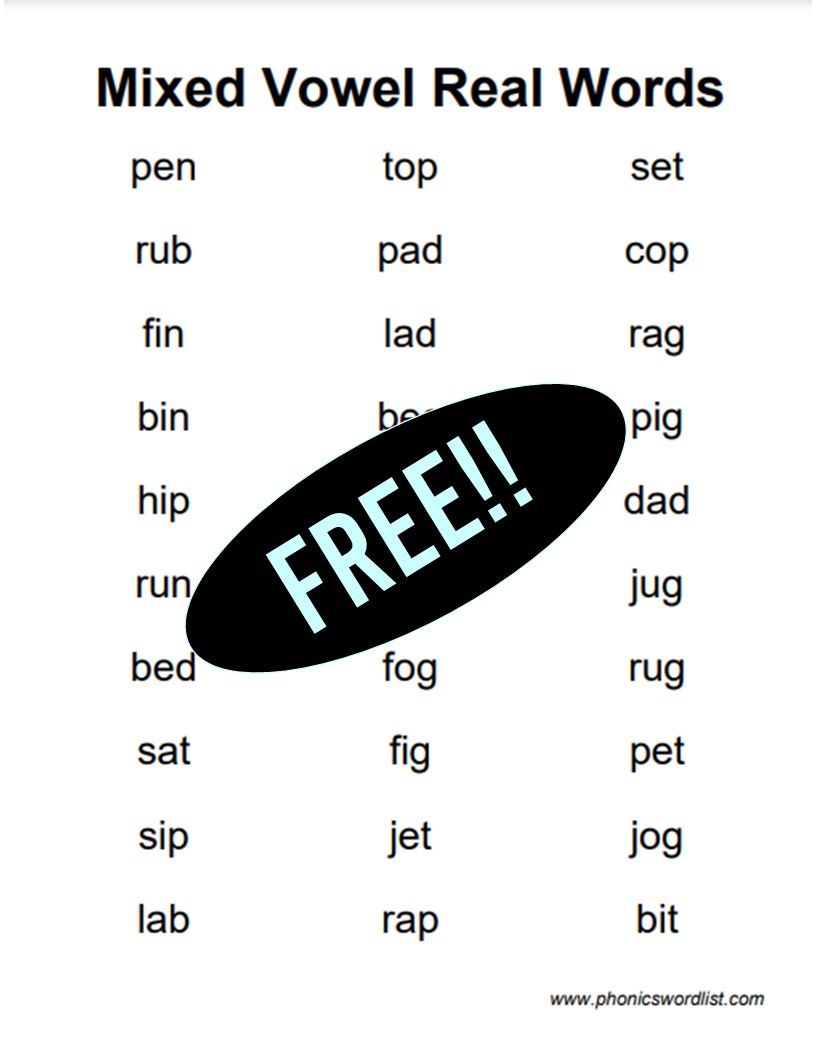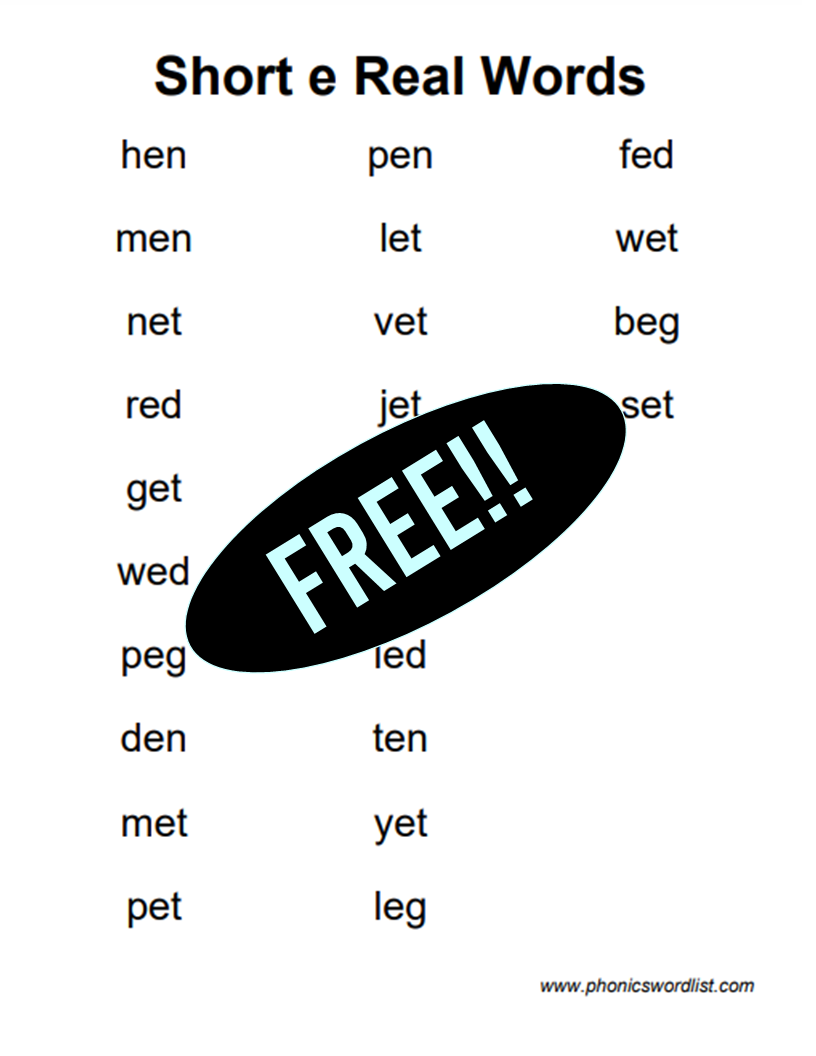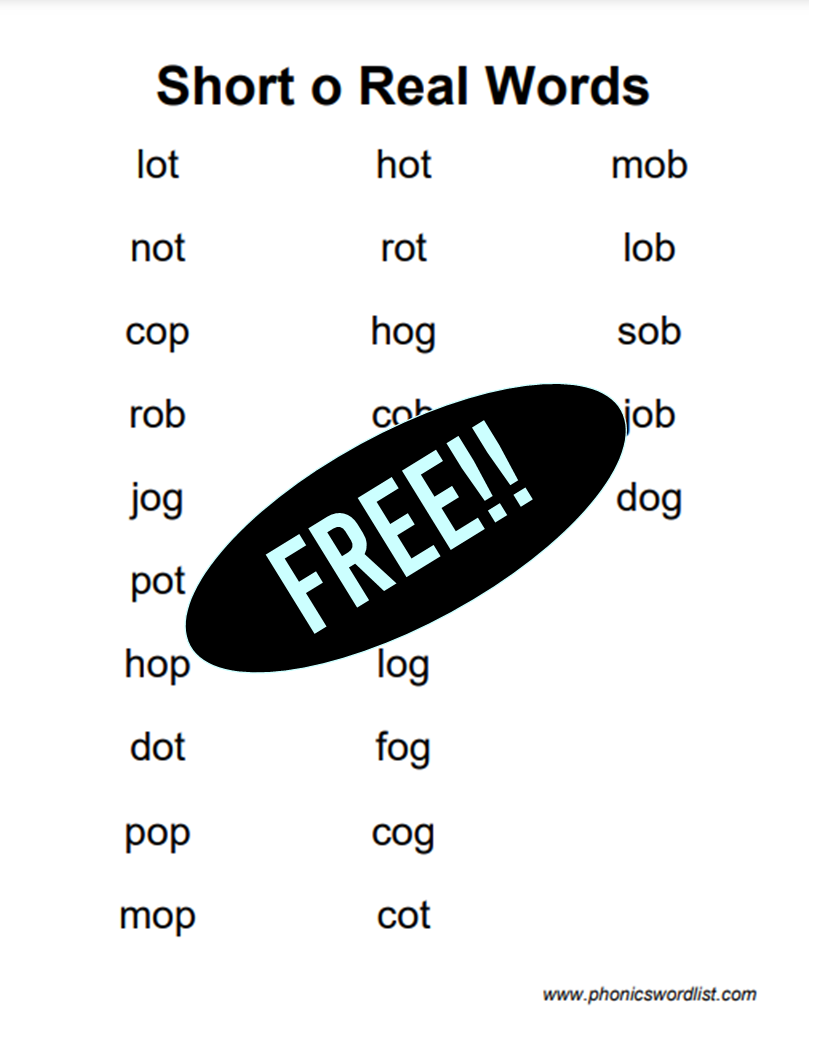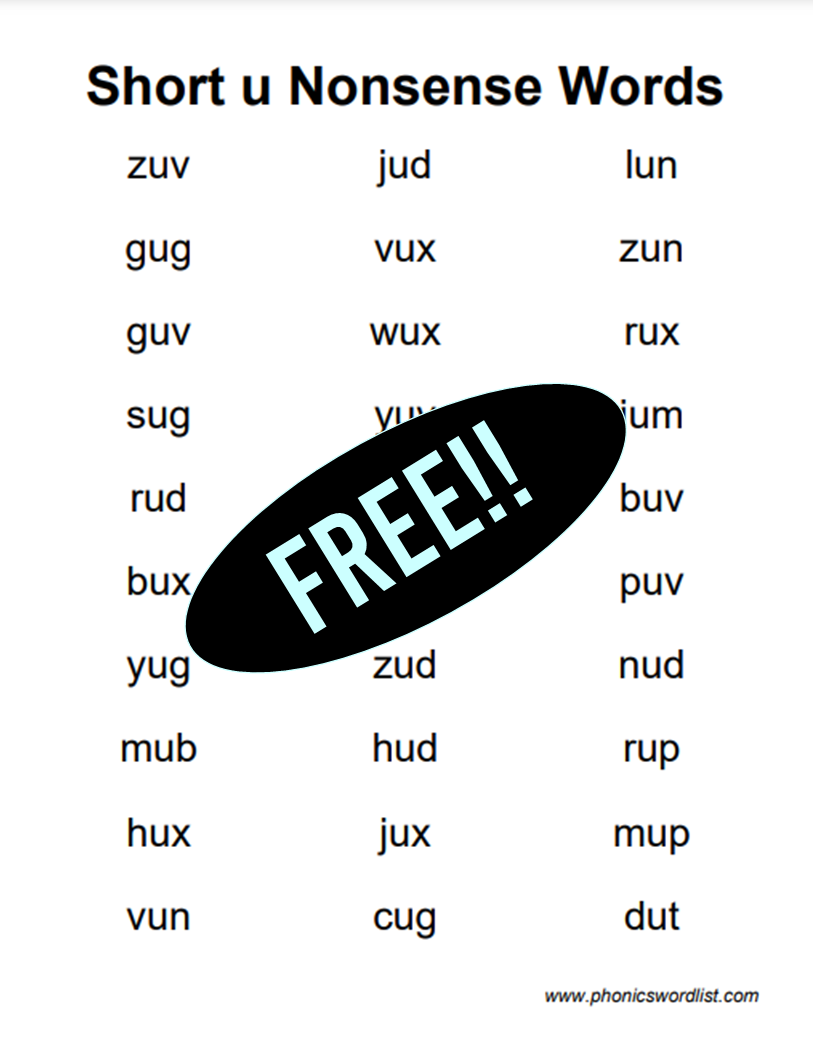CVC Words
Download printable, free CVC word lists in PDF format. On this page you can find pre-generated word lists including real words and nonsense words from each of the following categories: CVC words with short a, CVC words with short e, CVC words with short i, CVC words with short o, CVC words with short u, and CVC words with mixed vowels.
Need more lists? Generate your own free, printable CVC word lists using our CVC word generator! To create CVC word lists using our phonics word list generator, check off CVC real words or CVC nonsense words (or both). To specify which vowels or consonants you would like to include, click “include selected sounds” and check off the letters that you would like to include in your list.
CVC Word Lists by Vowel
Explore CVC Words by Individual Vowel:
Short A | Short E | Short I | Short O | Short U
How can I use these CVC word lists?
CVC words, which follow a consonant vowel consonant pattern, are typically taught at the very beginning of foundational reading and spelling instruction. They are the building blocks of all phonics skills to come. Words that follow a CVC pattern are easy for students to spell and decode because they have only three sounds and contain only short vowels. These three-letter words are commonly taught in kindergarten and 1st grade classrooms, although they are also taught in reading intervention and special education settings at all ages. Once students learn to read CVC words, they have a solid foundation for reading more complex syllable types.
CVC word lists can be useful when introducing new letter sounds, especially new short vowel sounds, to give students plenty of opportunity to practice reading and spelling with the new sounds. Use them in small groups in the classroom or send them home with students for extra practice.
CVC word lists can also be used for assessment and progress monitoring when you are teaching CVC words. You can see how students are faring reading or spelling real or nonsense words. You can also pinpoint particular letters or sounds that are causing difficulty for students.
Why are some of the CVC word lists shorter than others?
There are a limited number of CVC real words in the English language. In addition, we have eliminated certain words from our lists. We do not include words ending with am or an. Many phonics programs teach them separately, as the m or n ending changes the sound of the vowel a. We also do not include words that begin with soft c or soft g, such as gel or cel.
Why do so many of the nonsense words end with the same letters?
Our nonsense words follow the regular spelling rules of English. Therefore, they do not end with c or k, because that would require the digraph ck after a short vowel. They do not end with f, l, s, or z, which are typically doubled up after a short vowel. They do not end with h, r, w, or y, which either change the vowel sound at the end of a word or are silent at the end of a word. They do not end with qu or j, which are not typically used at the end of a word in English. We do include nonsense words that end with the letter v, although this is very rare in the English language (only used in the informal word “rev”), because v does not change the vowel sound. Additional, v is a difficult letter that students often need extra practice reading. If you would prefer a list without final v, perhaps if you are creating a nonsense word spelling assessment, you can simply create your own nonsense word list without the letter v.
Why aren’t word families included?
Although CVC word families have some role in teaching foundational skills for reading, particularly when working with phonological and phonemic awareness, they are not often the best vehicle for learning to read CVC words. Students can notice and follow the pattern without attending to the medial vowel or ending sound at all. The best way to learn to read CVC words is simply by reading CVC words! There are no shortcuts or tricks that will allow students to skip the hard work of learning to read!
About me!
Hi! My name is Miss Becca, and I’m an elementary school teacher in New York. Over the course of my teaching career, I’ve taught every grade from kindergarten through fifth grade. I’m certified in both special and general education, and I’ve taught students from both populations. I’ve also taught reading intervention.
I used to spend a lot of time creating my own word lists and word cards to supplement phonics programs and reading intervention programs. Learning to read is hard, and students need a lot of practice, but it was difficult to find resources targeting exactly what I needed! I created phonicswordlist.com to make my own job in the classroom easier, and hopefully to help other teachers as well!
I hope you find this resource useful! Feel free to shoot me an email at beccatheteacher (at) gmail (dot) com with any questions or feedback!
P.S. – Check out my store on Teachers Pay Teachers! 😊











